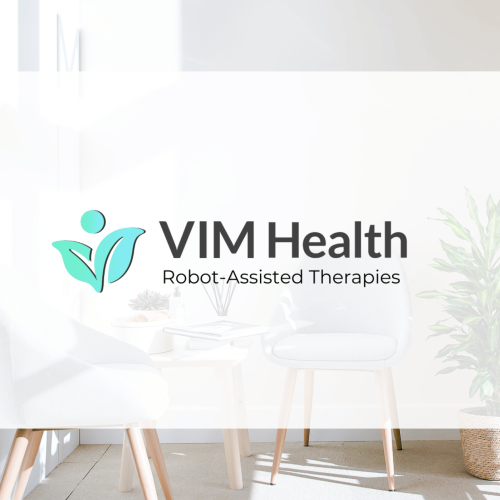Robotic rehabilitation can be a useful part of recovery after a stroke, both upper and lower limb robotics, combined with traditional therapy techniques can help people gain their independence back and the ability to carry out daily tasks as they did pre-stroke.
In this article, we look at the aftereffects of a stroke, what robotic rehabilitation therapy is, and how it can help people during stroke recovery.
The After Effects Of A Stroke
A stroke occurs when the blood supply to the brain is cut off, there are many reasons this can happen and although strokes are more likely to occur in certain people, anybody can have one. A stroke is a life-threatening medical emergency, and the sooner medical attention is sought, the chances of survival increase.
The speed at which medical attention is sought is vital when someone has a stroke, as damage to the brain carries on until there is an intervention – the faster a person seeks treatment, the better their chances of limiting damage.
Because of the variable factors above, the after-effects and lasting symptoms can be different, from person to person.
Listed below are some of the typical after effects, some people may just have one symptom or several.
- Balance and gait issues
- Dropped foot
- Muscle weakness and spasticity
- Bladder and bowel dysfunction
- Speech issues
The neurological issues present after a stroke can particularly affect lower and upper limb function. In day-to-day life, this can present in a manner of ways including issues with normal walking, or being unable to do tasks with the hands, such as writing or picking up smaller objects.
However, treatment is available for these symptoms and although some people may never return to the exact way they were before the stroke, the goal of rehabilitation is to enable the individual to live as independently as possible.
What Is Robotic Rehabilitation Therapy?
Robotic technology is a rapidly developing field in which robotics are used therapeutically to help people recover from illness or injury. Robotic technology, usually wearable can be applied to different parts of the body to assist with movement.
Robotic rehabilitation therapy can be used to improve function in arms and legs, including hand movement and assisting with foot drop.
The technology can be used to treat various conditions and are particularly useful for people that have suffered a stroke, or spinal cord injuries. Wearable robotics can either assist a patient with movement or gently guide them. The key advantage of robotic rehabilitation therapy is that exercises can be repeated to be beneficial to the patient. Coordinating software also allows for feedback on movement so a person’s response to the therapy can be measured over time.
The benefits of repeated exercise in people that are recovering from a stroke are due to a phenomenon called neuroplasticity. Repetitive movement patterns help the brain form new connections, essentially ‘rewiring’ it after a stroke to help the person regain as much normal function as possible.
How Can Intensive Rehabilitation With Robotics Help Post Stroke?
Various studies have shown that functional outcomes are better for people that have suffered acute strokes, if they start early and intensive rehabilitation programmes.
Intensive rehabilitation usually refers to the number of hours of therapy that a patient has and a combination of different therapy approaches.
Here at VIM Health, our intensive rehabilitation programmes are designed to include the use of robotic therapies, as they prove to be extremely useful for people that have suffered a stroke. Intensive programmes do vary between patients, depending on current functionality and what their recovery goals are.
Intensive programmes for people recovering from strokes usually involve a significant number of hours of therapy each week, for this, we can help arrange accommodation arrangements so patients can be nearby our flagship clinic. Although therapeutic technologies feature heavily in our intensive programmes, our holistic approach to recovery means we include more traditional therapeutic techniques too.
Robotic Rehabilitation Therapy Examples At VIM Health
VIM Health has a wide selection of robotic rehabilitation therapies available for people recovering from a stroke. We’ve included a couple of examples below.
Saebo is a suite of technologies we use to aid upper arm rehabilitation and is particularly effective in those that have complete or partial loss of their arm, due to a stroke. Our Saebo offering is composed of different devices and aids that will be used, depending on which part of the arm or shoulder has been damaged by a stroke. For example, SaeboFlex is a robotic hand device, which helps with thumb and finger extension and can be used to return normal functionality to the hand, such as the ability to lift objects such as a cup.
For people that are unable to walk after a stroke or those whose gait has been significantly affected, the THERA Trainer – Lyra is another brilliant bit of technology we provide at our clinic. Lyra is safe and comfortable to use and during therapy sessions, a patient’s body weight is supported in a secure harness whilst moving plates beneath the feet enable them to practice regular walking motions.
For more information on the rehabilitation robotics we use, please visit the technologies section of our website.
VIM Health
If you are looking for post-stroke rehabilitation programmes, either as an outpatient or with an interest in intensive rehabilitation, you may have a lot of questions before you start any treatments. Please visit our patient Information and FAQs for further information or get in touch with us.

